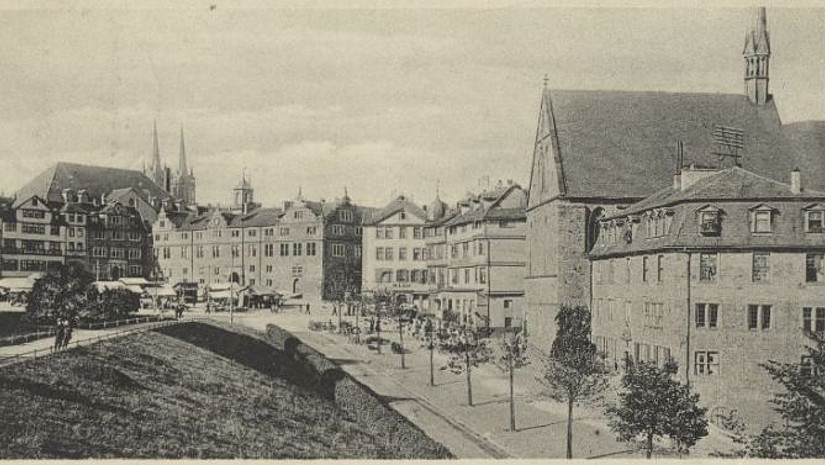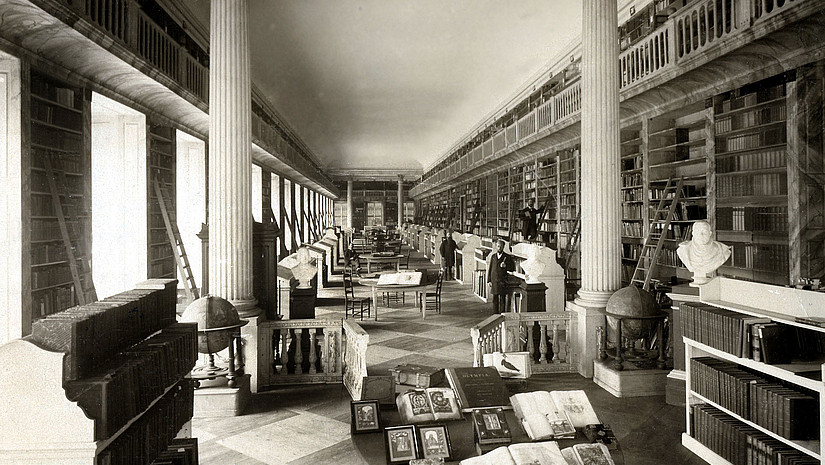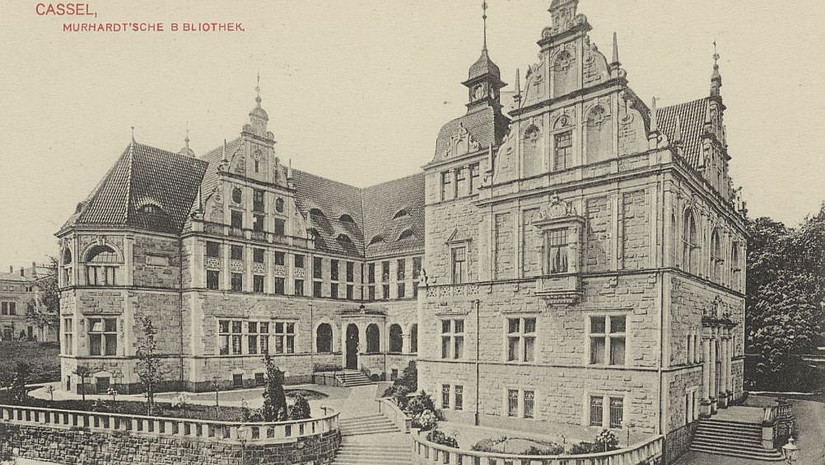History of the State Library
Beginnings
The book collection of the landgravial house was collected in one place for the first time in 1580, under Landgrave William IV (reigned 1567-1592). Over the centuries, the holdings expanded to include numerous prints, manuscripts and music manuscripts as well as printed music.
Landgrave William IV had a strong interest in scientific issues and dedicated himself to theological controversies of his time as well as complex problems in mathematics and astronomy. During his reign, numerous prints and incunabula were acquired at book fairs and through dealers, as well as through the purchase of smaller scholarly collections that were bequeathed to the princely library.
16th/17th Century
William's successor Maurice the Learned (1592-1627) showed little interest in furthering his predecessor's efforts to develop the library, although he promoted education and science as well as theater and music at his court.
The library acquired the collection of sheet music of Maurice's court orchestra as well as his outstanding holdings of alchemical writings, albeit in some cases only decades after his death.
During the reign of William V (1627-1637), the landgrave's troops plundered properties of the Abbey of Fulda during their engagements in the Thirty Years' War. In the process, valuable theological manuscripts and prints were taken to Kassel from the holdings of the Imperial Abbey of Fulda, among others.
After the death of Elector Charles II of the Palatinate († 1685), grandson of Landgrave William V, and that of his mother Charlotte († 1686), the so-called Palatinate Inheritance brought the extraordinary manuscript and book holdings of the Younger Palatina from Heidelberg to Kassel. Through them, the landgravial library, which had been located in the princely mews (Marstall) for some time, gained high-quality French and Italian Renaissance manuscripts as well as foreign-language prints.
Relocation to the Museum Fridericianum
In 1779, under Landgrave Frederick II (1760-1785), the library was moved from the old rooms in the mews (Masall) to the MuseumFridericianum, which had been purpose-built for the diverse princely collections.
The collection remained there until the destruction of the Fridericianum by incendiary bombs in October 1941, during which 90% of the print holdings of the state library were burned.
The State Library in the 19th Century
As a result of the Imperial Recess of 1803 (Reichsdeputationshauptschluss), which led to the abolition of various monasteries and convents, also in the territory of the Landgraviate, more extensive collections of manuscripts and printed books (especially from the library of St Peter's Collegiate Church in Fritzlar) were transferred to the library of the newly created Elector of Hesse.
Between 1807 and 1813, after the establishment of the Kingdom of Westphalia under Jérôme Bonaparte, the Electoral Library was, for all intents and purposes, dormant. The stipulation that books could only be lent out with the express consent of the new government severely limited normal library business, as did the extensive renovation work ordered by Jérôme in the Fridericanum.
With the withdrawal of the French and the re-establishment of the Electoral State, the library became more accessible again and experienced librarians once again took over responsibility for the valuable collections.
During this time, Wilhelm Grimm succeeded in obtaining a position as secretary at the Electoral Library. About two years later, his brother, Jacob Grimm, in turn assumed his post as second librarian in the library in April 1816. Both worked there until their departure for Göttingen in 1829, during which time they devoted themselves to their research and studies on fairy tales, legends, medieval literature, legal history and language.
After Hesse-Kassel received a liberal constitution in 1831, the Electoral Library was separated from the court administration and incorporated into the general administration of the state as the State Library.
It was not until 1897 that the Königliche Wilhelmshöher Schlossbibliothek (Royal Wilhelmshöhe Palace Library), which mainly contained printed works and charts, was united with the State Library. However, its holdings were largely lost in the fire of the Fridericianum in 1941.
Development after the 2nd World War
After the destruction of the Fridericianum, those parts of the State Library's collections that were saved from the flames and rubble were housed in the building of the Murhard Library.
In August 1948, the State Library was able to provisionally resume its public service in a room of the Neue Galerie, before it was also given additional rooms for lending in the Ständehaus from December of the same year and was able to set up a reading room.
After the administration of the State Library and the Murhard Library of the City of Kassel had been merged in 1957, the two libraries's collections were also combined in the Murhard Library on Brüder-Grimm-Platz in 1957.
In 1976, the Murhard Library of the City of Kassel and the State Library with all its holdings were incorporated into the GesamthochschulbibliothekKassel (Library of Kassel Comprehensive University; since 2003 Kassel University Library).




